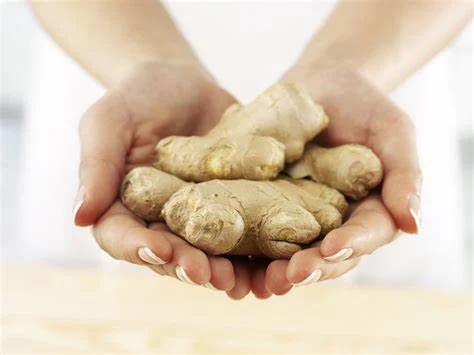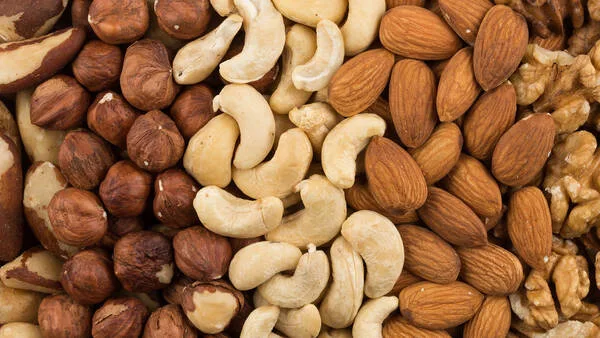Menstruation is often an uncomfortable time, characterized by heightened hormone levels and low moods.
Some women find relief from cramps by using a heating pad, while others prefer solitude to cope with severe mood swings.
Carrying the potential for life entails significant responsibilities. Monthly cycles can bring about fatigue, nausea, mood swings, headaches, abdominal cramps, bloating, diarrhea, and a general feeling of illness. This doesn't even consider conditions like polycystic ovary syndrome, which can cause heavy or absent periods.
If altering your diet during pregnancy could mitigate these symptoms, would you consider it? Perhaps there's truth to the saying that an apple a day keeps the doctor away.
13 FOODS THAT CAN HELP DURING A PERIOD
Fortunately, there are several foods and beverages you can consume during your menstrual cycle to alleviate discomfort. The great news is that you likely already have most of these items in your pantry, eliminating the need for additional expenses. Here are the top 13 dietary additions to consider during your period.
1. WATER-RICH FRUITS
Maintaining hydration during menstruation is crucial. Consuming fruits with high water content can aid in this. Moreover, the natural sweetness of fruits may also satisfy sugar cravings.
2. GINGER
Ginger is a spice known for its effectiveness against various types of pain. To alleviate bloating and cramps during menstruation, one should prepare a cup of ginger tea. Ginger's potent anti-inflammatory properties can offer relief.
The Journal of Maternal-Fetal & Neonatal Medicine cites a study on ginger's impact on nausea in pregnant women. The study not only confirmed that ginger aids in reducing nausea and vomiting but also highlighted its safety and cost-effectiveness as a treatment option. However, it is crucial to limit the intake to no more than four grams per day to avoid gastrointestinal disturbances.
3. FLAXSEED OIL
Flaxseed oil is rich in omega-3 fatty acids, containing over 7,100 milligrams in just 15 milliliters. An intake of 1,600 milligrams daily is recommended to combat free radicals. Additionally, this natural oil can alleviate constipation during menstruation.
4. TURMERIC
Turmeric is currently receiving significant attention as a spice that can seemingly remedy a wide range of issues. Its anti-inflammatory properties are particularly beneficial during menstrual periods. This spice can be incorporated into your meals, consumed as a supplement, or brewed into tea.
Extensive medical research supports the assertions that turmeric is an effective tool for combating pain and bloating, thanks to its anti-inflammatory attributes.
5. FISH
Cold-water fish varieties, such as salmon, are rich in omega-3 fatty acids. They are not only low in calories and high in protein but also an excellent source of iron. During menstruation, iron levels can vary; however, consuming fish helps maintain a healthy iron concentration.
Were you aware that consuming fish could be as effective as taking ibuprofen? The International Journal of Gynecology and Obstetrics cited a study which discovered that women who included fish in their diet experienced fewer mood swings and less depression, leading to an overall improved feeling during their menstrual cycle.
6. KOMBUCHA
Kombucha, a tangy fermented tea, brims with properties that combat yeast. Caution is advised when purchasing from supermarkets, as many manufacturers infuse excessive sugar. However, with some expertise, you can brew this tea at home.
For those who eschew dairy products like yogurt but seek yeast-combating alternatives, this remarkable potion serves as an ideal substitute. Laden with probiotics and antioxidants, it's reputed for its bacteria-eliminating prowess within the body. During menstruation, maximizing bacterial defense is crucial."
7. QUINOA
Quinoa is a renowned superfood that offers a healthier alternative to rice. Its nutrient composition is particularly beneficial for women. The high iron content in quinoa can compensate for the loss of iron during menstruation.
Furthermore, this superfood is rich in protein and magnesium, aiding in mood stabilization and curbing cravings. It's also worth noting that quinoa is a gluten-free option, making it suitable for individuals with celiac disease without exacerbating their condition. Additionally, its low glycemic index is favored by those with diabetes, as it prevents sugar spikes and the subsequent energy crashes post-consumption.
8. DARK CHOCOLATE
Dark chocolate and milk chocolate differ significantly. Dark chocolate contains less sugar and offers benefits that should not be overlooked, particularly during menstruation. Being rich in magnesium, it can alleviate premenstrual syndrome symptoms, as indicated by a study cited by the National Institutes of Health.
9. CHICKEN
Chicken is a lean meat rich in protein and is also an outstanding source of iron. Including sufficient protein in your diet aids in maintaining satiety, which enhances your general health. Women, particularly during their menstrual cycle, can benefit from this nutrient's ability to help curb cravings.
10. LEAFY GREEN VEGETABLES
Since you lose blood during your period, it's common for iron levels to drop. This loss of iron can make you feel tired and lethargic. Fortunately, consuming leafy greens such as kale and spinach can help increase your iron levels.
Additionally, spinach provides high levels of magnesium, which can aid in managing mood swings and promoting a better state of mind.
11. LENTILS AND BEANS
Have you ever heard the jingle that goes, 'Beans, beans are good for your heart?' It turns out that beans are beneficial not only for your heart but also for other aspects of your health. Their high iron content makes them an ideal option when your levels fall too low, particularly during menstruation.
Furthermore, their substantial protein content leads many to view them as a viable meal replacement. Additionally, beans are low in calories and abundant in vitamins.
12. PEPPERMINT TEA
A study conducted in 2016 indicates that peppermint tea may alleviate PMS symptoms. It is particularly effective in easing menstrual cramps, reducing nausea, and lessening diarrhea.
13. NUTS
Nuts make an excellent snack due to their high protein content, abundance of magnesium, and various other vitamins. Did you know that consuming almonds may alleviate headaches?
Furthermore, nuts are rich in omega-3 fatty acids, which enable them to combat free radicals effectively. If you're not keen on eating nuts by themselves, you could explore the numerous nut butter options available in stores. Opt for an all-natural one with minimal or no added sugar.
FOUR FOODS TO AVOID DURING A PERIOD
It's essential not to discuss consumables without addressing those that should be avoided. Initially, monitoring salt consumption is crucial as it may lead to increased bloating and, generally, salt is not beneficial for health.
Regarding sugar, it's important to keep an eye on intake levels. Succumbing to intense cravings can result in glucose spikes and crashes, leading to discomfort. Although sugar is appealing, natural sweetness from fruits can be a healthier alternative.
Caffeine should also be consumed with caution as it may trigger digestive problems, bloating, and headaches. If you're used to daily coffee or soda, aim to reduce rather than eliminate intake during your menstrual cycle to avoid headache triggers.
Alcoholic drinks are best avoided since they can lead to dehydration, digestive issues, and exacerbated headaches, which are undesirable during menstruation.
Finally, it's advisable to steer clear of overly spicy foods. Even though items like jalapeños or ghost peppers might be tempting, they can aggravate the stomach and cause diarrhea. Menstruation is not the ideal time for dietary experiments, especially if your body isn't accustomed to such spices.














Comments
Post a Comment